
Home


Publications

Downloads

Movies

Links

People

|
|
The Lagrangian hydrodynamics code
MAGMA2
Code paper: can be found *here*
In a nutshell:
MAGMA2 is a (mostly) Newtonian, completely Lagrangian hydrodynamics code. It is a
modern Smoothed Particle Hydrodynamics code ("Not your parents' SPH") that profits
from a number of novel elements:
- high-order Wendland kernels, each particle uses 300 neighbour particles for calculating densities and gradients
- accurate gradients via matrix-inversion techniques; the symmetries in the gradient expressions enable (like standard SPH-approaches) exact conservation
- "dissipation only where needed":
- slope-limited reconstruction (similar to Finite Volume techniques)
- entropy-based steering of dissipation parameters;
details can be found *here*
Examples:
3D Sedov-Taylor explosion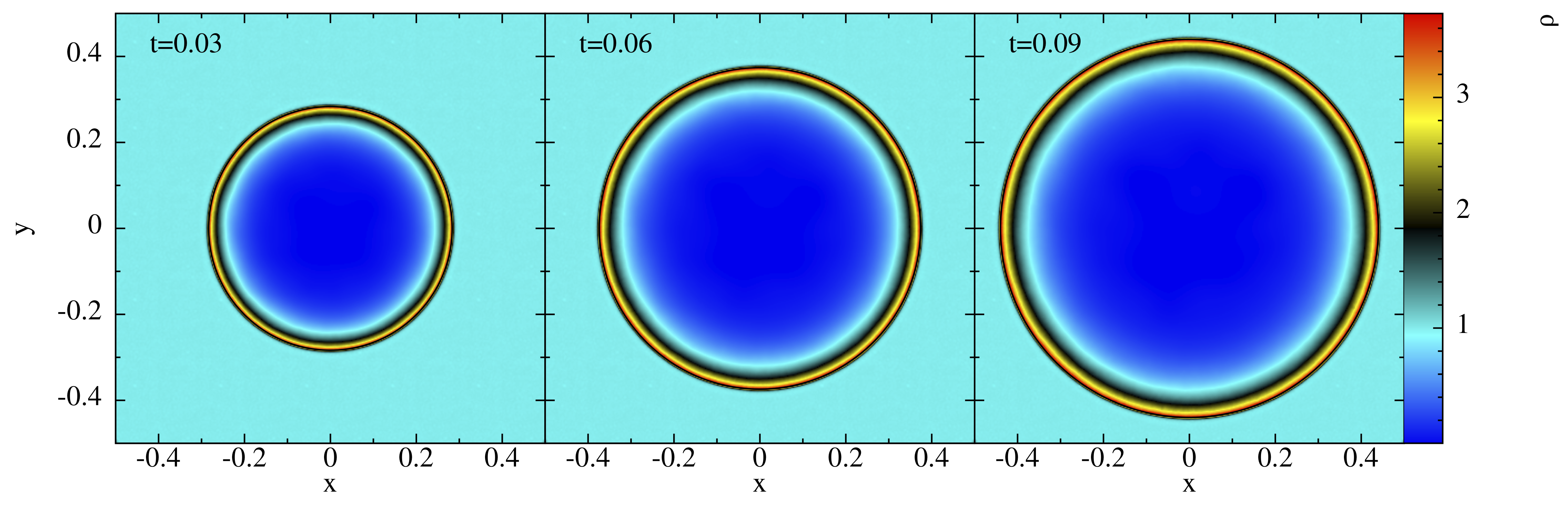
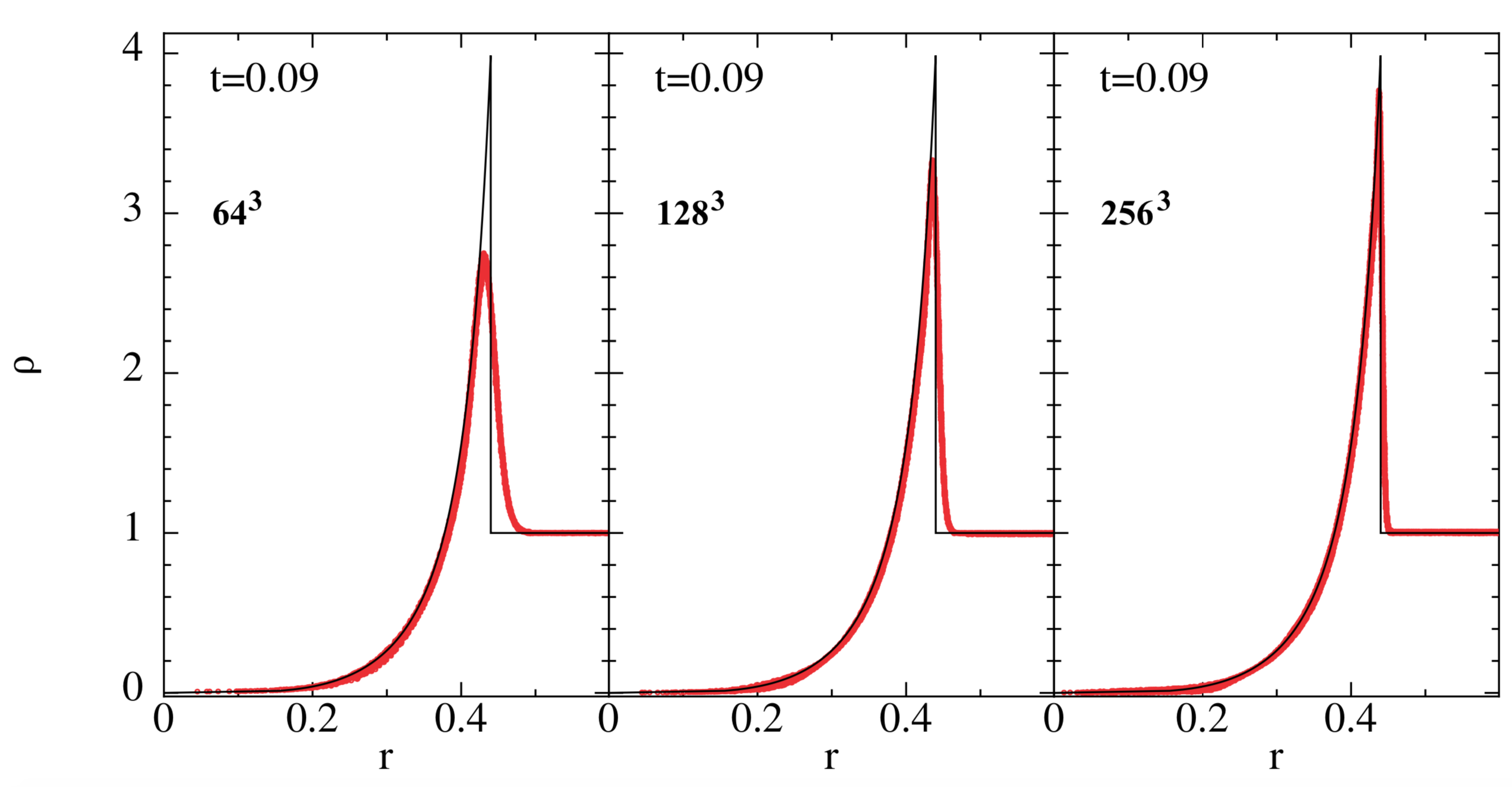
Comments:
- a Sedov-Taylor explosion is a strong, initially point-like explosion into a low-density environment
- the exact solution is known (black line, second plot)
- it is a good numerical test, because many codes (particle- and grid-based) produce
- (substantial) deviations from spherical symmetry
- a lot of noise behind the shock front
- the MAGMA2 solution shows no visible deviation from perfect symmetry
- in the second plot *every single particle* is shown (as red dots), i.e. we have an extremely well behaved particle distribution; this is the result of careful initial conditions and the Wendland-kernel + 300 neighbours
Kelvin-Helmholtz instability
click on the following picture to play the movie (left:density; right: dissipation parameter)
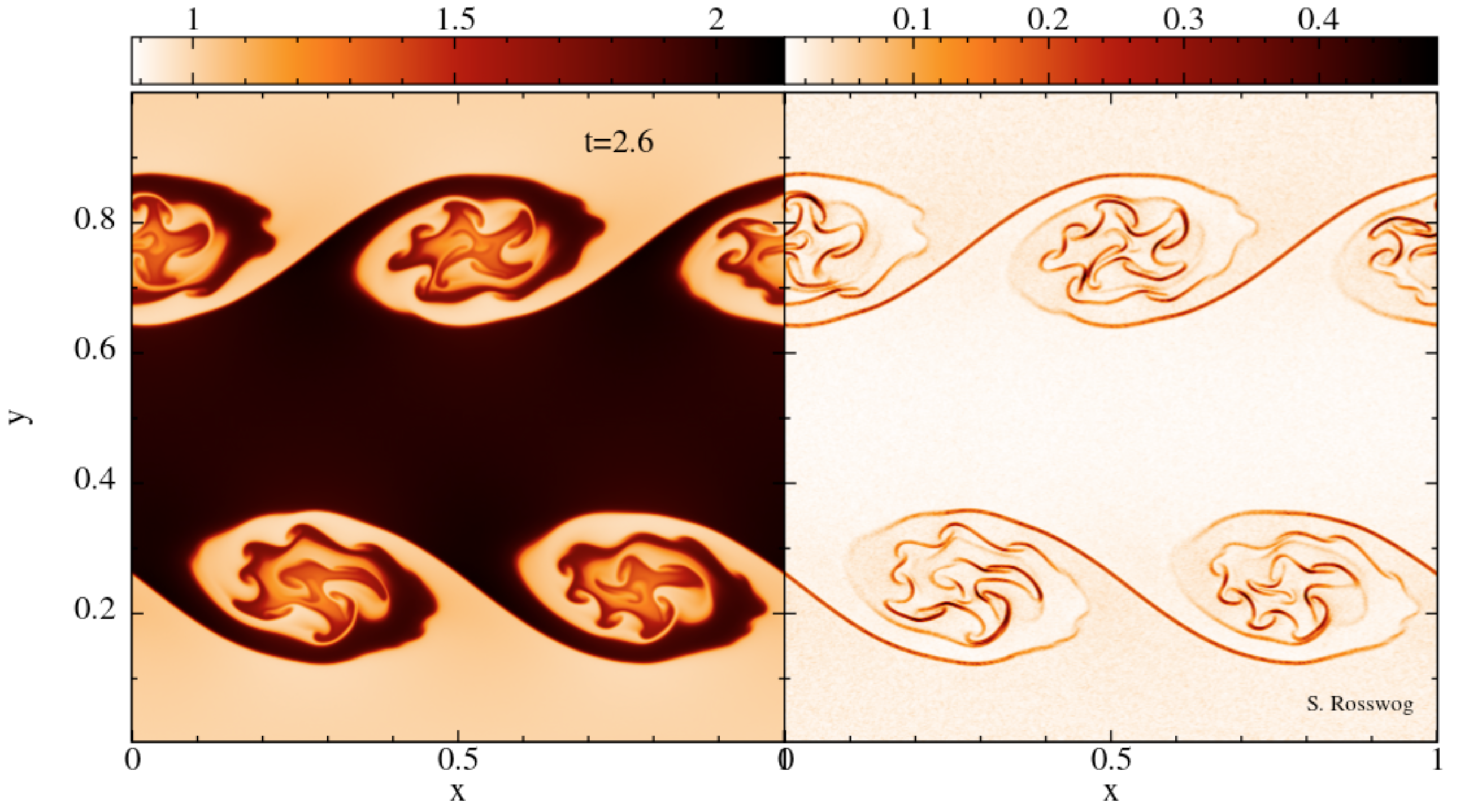
Comments:
- the shown Kelvin Helmholtz test is usually considered challenging for SPH and for "traditional formulations" the instability grows too slowly (if at all), see McNally et al. (2012)
- test is run in "pseudo-2D" (= thin 3D-slice) with the full 3D code
- the MAGMA2 results show an accurate growth of the instability, even at low resolution, see Fig.19 in the MAGMA2 code paper
- the major difference compared with "standard SPH" comes from the slope-limited reconstruction, the second most import effect for this test comes from the more accurate gradients, see Fig. 20 in the code paper
- the movie shows the density on the left and the dissipation parameter, steered by our entropy-method, on the right; for comparison keep in mind that many "traditional SPH" methods use a constant dissipation parameter of ~1
Rayleigh-Taylor instability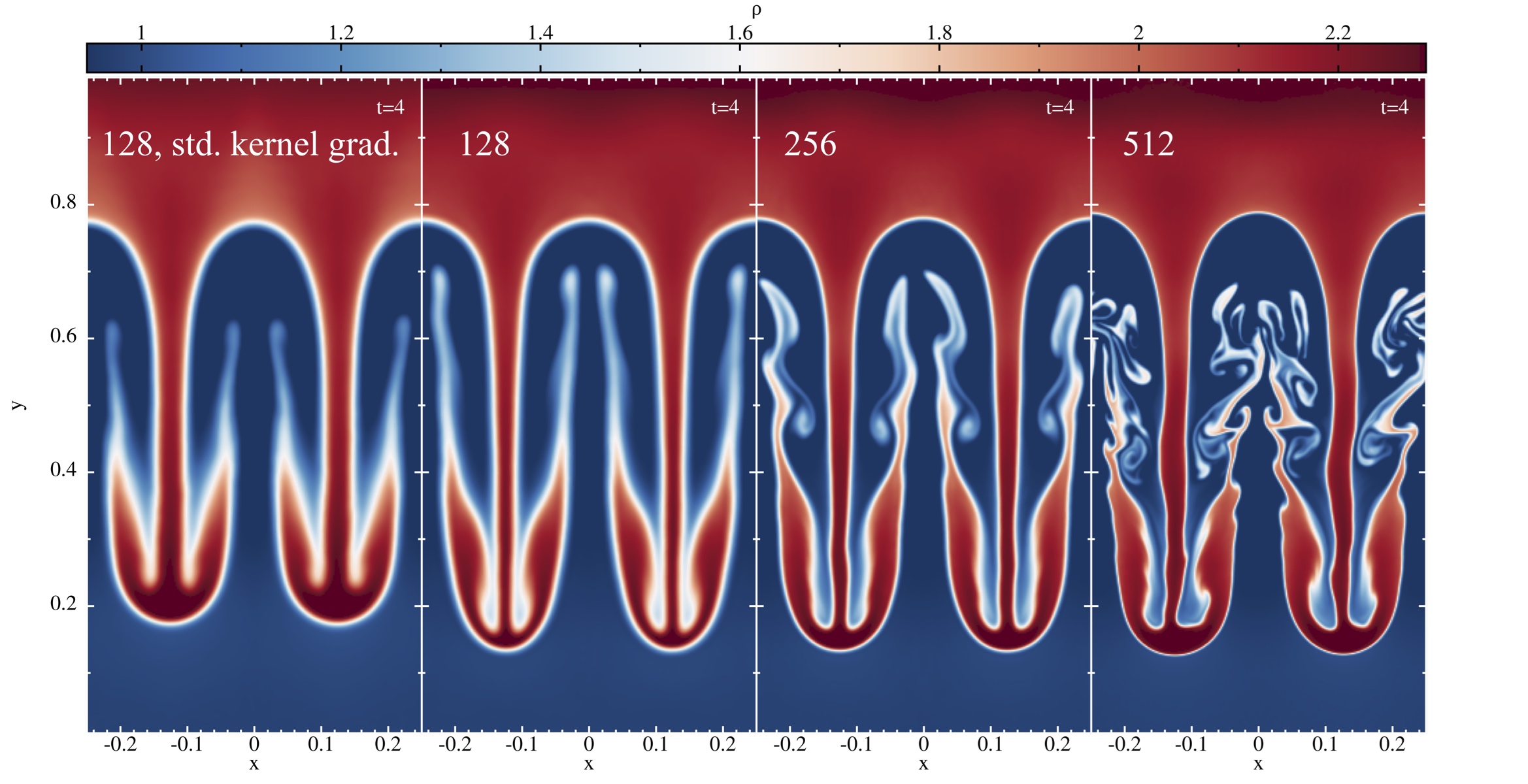
Comments:
- Rayleigh-Taylor instabilities are another standard hydrodynamics test
- test is run in "pseudo-2D" (= thin 3D-slice) with the full 3D code
- the MAGMA2 results agree very well in this test
with other state-of-the-art codes
Schulz-Rinne tests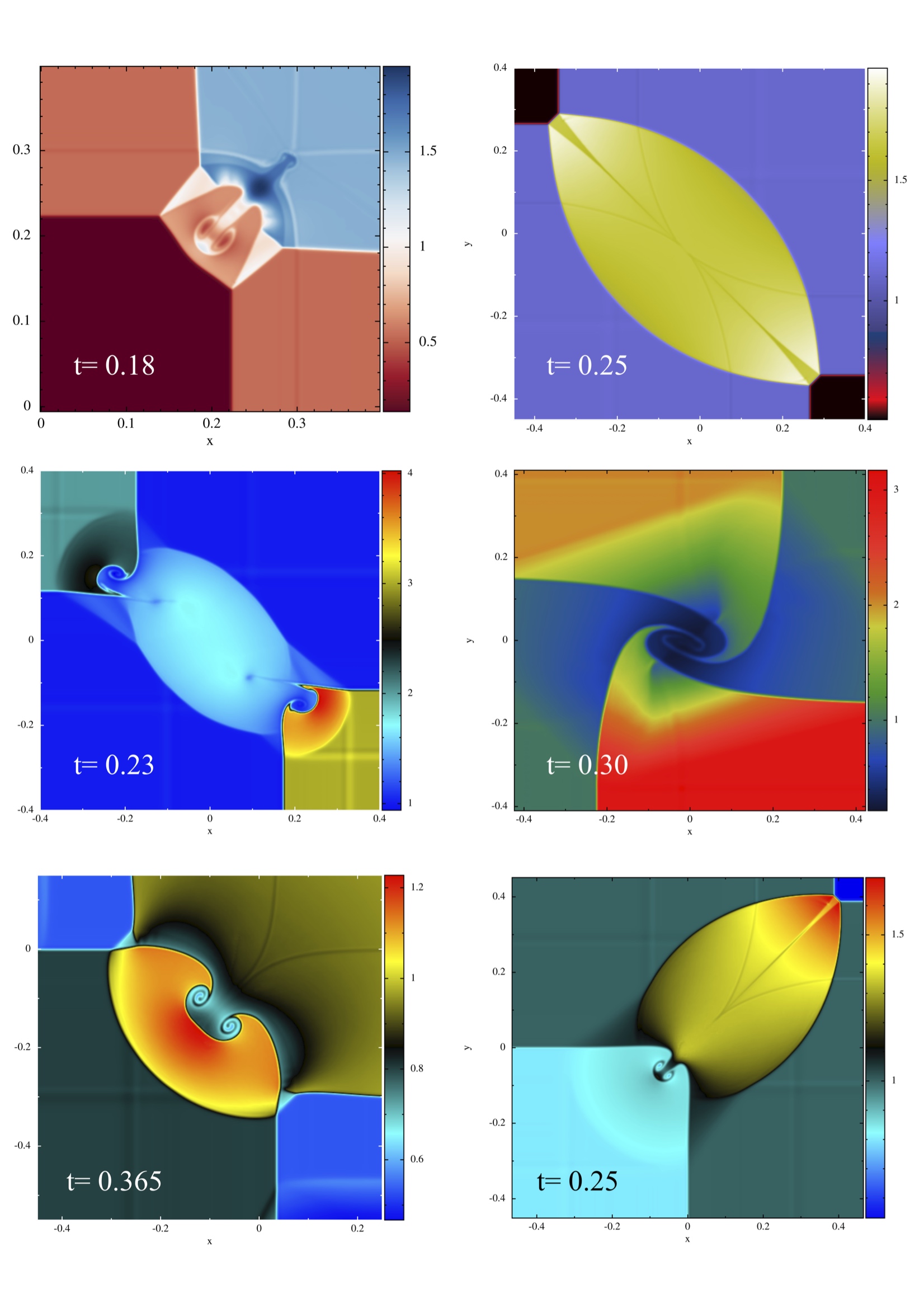
Comments:
- Schulz-Rinne (1993) designed a set of very challenging benchmark tests where complex wave patterns emerge and in particular a combination of shocks and vorticity creation occurs
- no analytic solutions are known for these tests, but many numerical solutions from modern Eulerian codes; actually these tests have hardly ever been tackled with SPH, it seems...
- again, the MAGMA2 results are in very good agreement with those from modern Eulerian codes
Tidal disruptions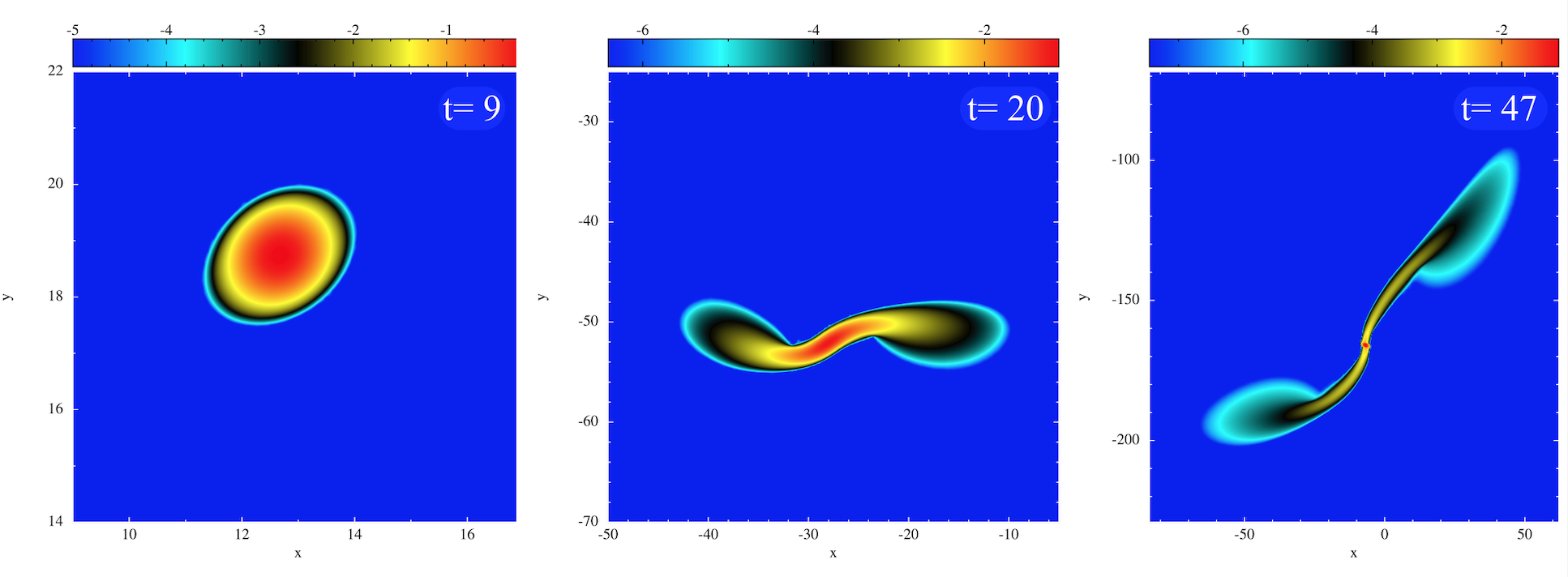
"double disruption" of a stellar binary by a supermassive black hole of 1 million solar masses:

Comments:
- Tidal Disruption Events (TDEs) pose serious computational challenges:
- the disrupted star is often "spagettified" and much larger than the orignal stars
- often self-gravity is important for structure of the debris and for weak encounters
often leads to the re-formation of a central core in the centre of the "spagetti", see panel 3
in the first TDE plot
- the geometry of the double-disruption remnant, in particular its self-gravity, poses a
major challenge for most hydrodynamics methods
|